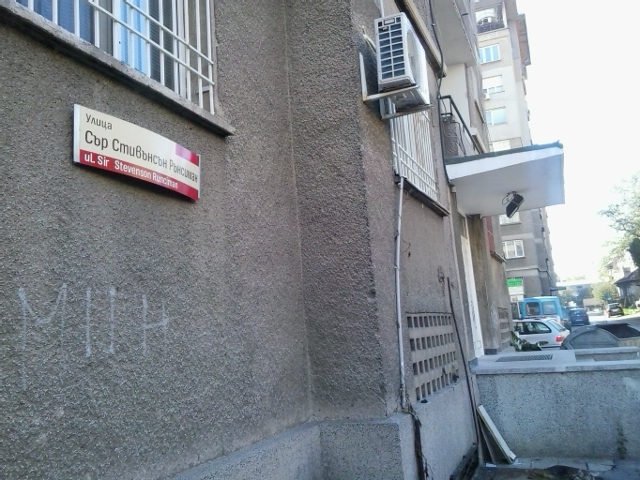|
Edmund, 1st Earl Of Lancaster
Edmund, Earl of Lancaster and Earl of Leicester (16 January 12455 June 1296) nicknamed Edmund Crouchback was a member of the House of Plantagenet. He was the second surviving son of King Henry III of England and Eleanor of Provence. In his childhood he had a claim on the Kingdom of Sicily; however, he never ruled there. He was granted all the lands of Simon de Montfort in 1265, and from 1267 he was titled Earl of Leicester. In that year he also began to rule Lancashire, but he did not take the title Earl of Lancaster until 1276. Between 1276 and 1284 he governed the counties of Champagne and Brie with his second wife, Blanche of Artois, in the name of her daughter Joan, and he was described in the English patent rolls as earl of Lancaster and Champagne. His nickname, "Crouchback", may be a corruption of 'crossback' and refer to his participation in the Ninth Crusade.Simon Lloyd, "Edmund , first earl of Lancaster and first earl of Leicester (1245–1296)", ''Oxford Dictionary of ... [...More Info...] [...Related Items...] OR: [Wikipedia] [Google] [Baidu] |
Westminster Abbey
Westminster Abbey, formally titled the Collegiate Church of Saint Peter at Westminster, is an historic, mainly Gothic church in the City of Westminster, London, England, just to the west of the Palace of Westminster. It is one of the United Kingdom's most notable religious buildings and since Edward the Confessor, a burial site for English and, later, British monarchs. Since the coronation of William the Conqueror in 1066, all coronations of English and British monarchs have occurred in Westminster Abbey. Sixteen royal weddings have occurred at the abbey since 1100. According to a tradition first reported by Sulcard in about 1080, a church was founded at the site (then known as Thorney Island) in the seventh century, at the time of Mellitus, Bishop of London. Construction of the present church began in 1245 on the orders of Henry III. The church was originally part of a Catholic Benedictine abbey, which was dissolved in 1539. It then served as the cathedral of the Dioce ... [...More Info...] [...Related Items...] OR: [Wikipedia] [Google] [Baidu] |
Lancashire
Lancashire ( , ; abbreviated Lancs) is the name of a historic county, ceremonial county, and non-metropolitan county in North West England. The boundaries of these three areas differ significantly. The non-metropolitan county of Lancashire was created by the Local Government Act 1972. It is administered by Lancashire County Council, based in Preston, and twelve district councils. Although Lancaster is still considered the county town, Preston is the administrative centre of the non-metropolitan county. The ceremonial county has the same boundaries except that it also includes Blackpool and Blackburn with Darwen, which are unitary authorities. The historic county of Lancashire is larger and includes the cities of Manchester and Liverpool as well as the Furness and Cartmel peninsulas, but excludes Bowland area of the West Riding of Yorkshire transferred to the non-metropolitan county in 1974 History Before the county During Roman times the area was part of the Bri ... [...More Info...] [...Related Items...] OR: [Wikipedia] [Google] [Baidu] |
Pope Urban IV
Pope Urban IV ( la, Urbanus IV; c. 1195 – 2 October 1264), born Jacques Pantaléon, was the head of the Catholic Church and ruler of the Papal States from 29 August 1261 to his death. He was not a cardinal; only a few popes since his time have not been cardinals, including Gregory X, Urban V and Urban VI. Early career Pantaléon was the son of a cobbler of Troyes, France. He studied theology and common law in Paris and was appointed a canon of Laon and later Archdeacon of Liège. At the First Council of Lyon (1245) he attracted the attention of Pope Innocent IV, who sent him on two missions in Germany. One of the missions was to negotiate the Treaty of Christburg between the pagan Prussians and the Teutonic Knights. He became Bishop of Verdun in 1253. In 1255, Pope Alexander IV made him Latin Patriarch of Jerusalem. Pantaléon had returned from Jerusalem, which was in dire straits, and was at Viterbo seeking help for the oppressed Christians in the East when Alexander IV ... [...More Info...] [...Related Items...] OR: [Wikipedia] [Google] [Baidu] |
Steven Runciman
Sir James Cochran Stevenson Runciman ( – ), known as Steven Runciman, was an English historian best known for his three-volume ''A History of the Crusades'' (1951–54). He was a strong admirer of the Byzantine Empire. His history's negative portrayal of crusaders and contrasting more favourable view of Byzantine and Muslim societies had a profound impact on the popular conception of the Crusades. Biography Born in Northumberland, he was the second son of Walter and Hilda Runciman. His parents were members of the Liberal Party and the first married couple to sit simultaneously in Parliament. His father was created Viscount Runciman of Doxford in 1937. His paternal grandfather, Walter Runciman, 1st Baron Runciman, was a shipping magnate. He was named after his maternal grandfather, James Cochran Stevenson, the MP for South Shields. Eton and Cambridge It is said that he was reading Latin and Greek by the age of five. In the course of his long life he would master an astonish ... [...More Info...] [...Related Items...] OR: [Wikipedia] [Google] [Baidu] |


